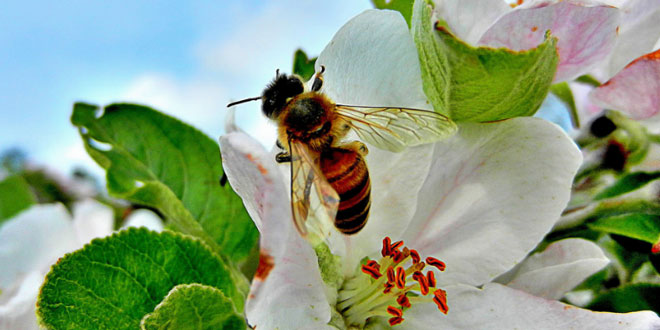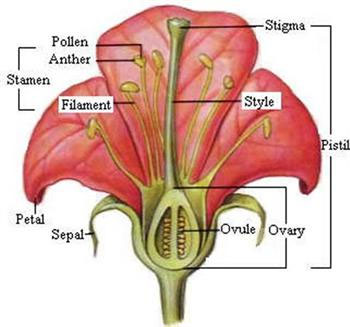Question: Why are there so many varieties of fruits?
Answer: Fruits develop by many ways so there are many varieties of fruits. For example, some fruits develop without the act of fertilization. Such fruits are called parthenocarpic fruits. For example- seedless grapes, guava, mango etc.
Question: Explain different parts of flower?
Answer: Following are the parts of flowers:
- Sepal: Green leafy part of flower that protect flower in bud condition.
- Petal: Coloured leafy part of flower that attract insect for pollination.
- Stamen: The male parts of flower that contain pollen grain.
- Pistil: The female parts of flower that contain ovary at bottom.
Question: Name the male and female part of flower.
Answer: Androecium is the male part of a flower, and Gynoecium is the female part.
Androecium is a group of stamens. Each Stamen consists of a stalk called the filament and a small bag like structure called the anther at the tip. The pollen grains are contained in the anther within the pollen sacs.
Gynoceium is the female part of the flower and consists of the carpels or ovary. Gynoceium has three parts – Stigma
Style and Ovary. The ovary contains the ovules and each ovule carries within it an embryo sac, within which lies the egg cell or the female gamete.
Question: Mention some of the spores of asexual reproduction.
Answer: Aplanospores, Zoospores, Akinetes and Conidia.
Question: Explain the structure of a flower with the help of a diagram.
Answer: Flower: Flower is a special organ of flowering plants (angiosperms) which works as the reproductive system. A flower is composed of four distinct whorls.
(1) The outermost whorl is called calyx. It is composed of green leaf-like structures called sepals.
(2) The second whorl is called corolla. It is composed of colourful structures called petals. Petals are colourful so that insects and other animals can be attracted towards them. This is necessary for pollination.
(3) Androecium: The third whorl is called androecium. It is composed of stamens. Stamen has two main parts. The tube-like portion is called filament. The capsule like structure at the top is called anther. The anther produces pollen grains; which are the male gametes.
(4) Gynoecium: The whorl at the center is called gynoecium. It has a swollen base; called ovary and a tube-like structure; called style. The top of the tube is somewhat flattened and is called stigma. Ovary produces the eggs or female gametes.
What is the benefit of colourful petals for plants?
Answer: Colourful petals attract insects, birds and other animals. It helps in cross pollination.
 Class Notes NCERT Solutions for CBSE Students
Class Notes NCERT Solutions for CBSE Students





How is sexual reproduction different from asexual reproduction?
In sexual reproduction two parent is present one male and one female .The offspring are not exact copies of either parent.
In asexual reproduction only one parent is present .The resulting offspring are exact copies of the parent.